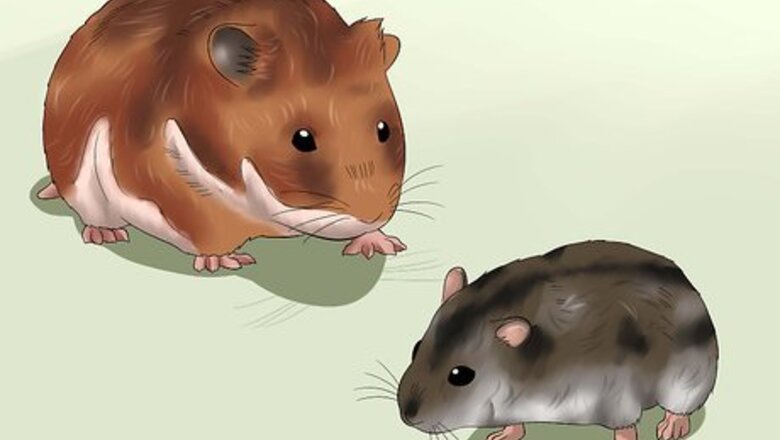
views
Understanding Why Hamsters Fight
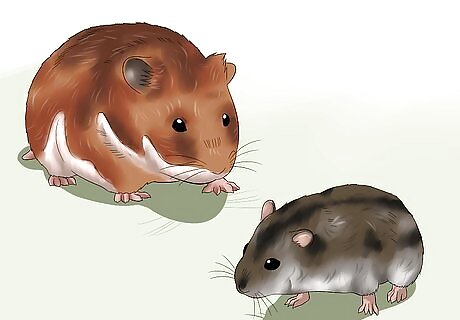
Determine the species of your hamsters. Certain hamster species should be kept alone, in separate cages, and away from other species. Certain species can also only socialize if they are of the same gender. Take your hamster to the vet to confirm her species, or ask the pet store where you purchased your hamster about her species. Syrian hamsters, also called Golden hamsters, are the most common species, and the largest of the species. They come in a variety of colors, though the most common is a golden, light brown coat with black spots and a white underbelly. They also have beady eyes, large ears, and short tails. Syrian hamsters should never be kept together as they are territorial and solitary creatures. These aggressive tendencies start to develop when Syrian hamsters are between 6 and 8 weeks old. Once they reach 8 weeks, they should be housed on their own in separate cages. Dwarf hamsters are the second most common species and are smaller than Syrian hamsters. Dwarf hamsters have a dark strip of fur running from their head down to their tail and are often brown in color, unless they are albino, then they will be all white. Dwarf hamsters usually prefer to live socially, in pairs or groups. But their sociability varies, and some dwarf hamsters prefer to live alone. Chinese Dwarf hamsters are the third most common species. They are small, about 4–5 inches (10–13 cm) long, with silky gray-brown fur and black stripes down their backs. These hamsters are sometimes mistaken for mice, as they have longer tails than other hamster species. Their long tails make them great jumpers and climbers. They enjoy human interaction, but don't usually play well with other hamsters, so keep only one per a cage. They are also nocturnal, so they will run around and make noise at night. Please note that there is no such thing as hamster breeds. There are only hamster species and colorings.
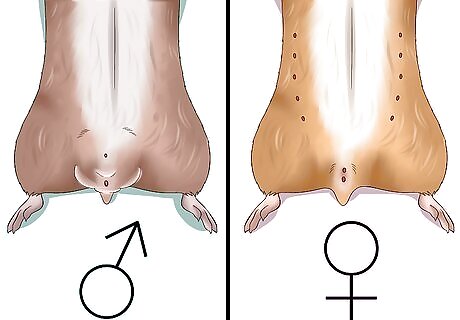
Find out the gender of your hamsters. The best rule of thumb is to keep hamsters of the same gender together and separate hamsters of different genders in separate cages. Hamsters of the same gender tend to fight and squabble less than hamsters of different genders. If you want to try to keep hamsters of different genders in the same cage, introduce them when they are young.
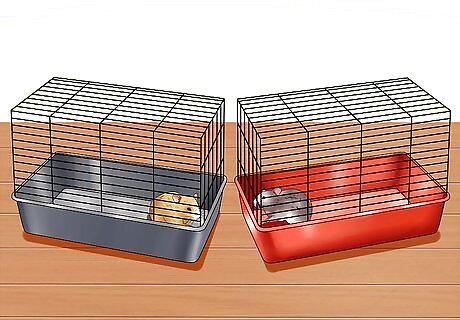
Put the hamsters in separate cages side by side. This initial set up allows the hamsters to get used to each other's scent without physical contact. Let them smell and interact with each other through the bars of their separate cages. Once they appear to be tolerating each other, try putting them in the same cage. Before you put them in the same cage, make sure the cage is neutral and does not contain the scent of either hamster. The cage should be clean or new, have clean bedding, and clean toys. This will give the hamsters fewer things to fight over and dissuade them from fighting over territory.
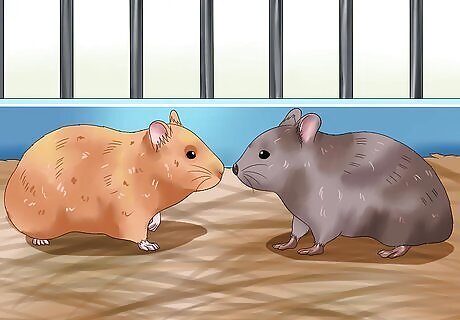
Watch your hamsters play and interact in their cage. Once you place the hamsters together in one cage, pay attention to how they interact with each other. Do they play with each other at least once a day or ignore each other? Does one hamster seem more forward or aggressive than the other hamster? This will help you get a sense of their dynamic and if they are starting to become aggressive with each other. Do not leave your hamsters alone in their cage until you are satisfied that they are tolerating each other. You should feel they are not physically dangerous to one another or likely to harm each other. If you are not sure if they are getting along, remove them from the same cage and place them back in separate cages. Try placing them together again the following day and watch them interact for signs they are getting along.
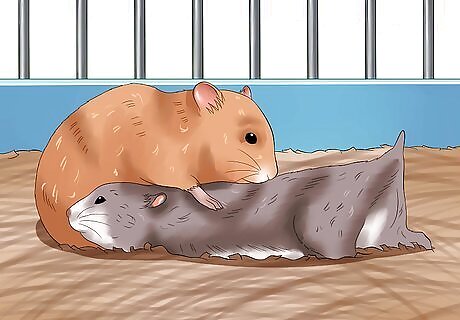
Be prepared for normal squabbling between your hamsters. Normal squabbling between your hamsters is about dominance, where one hamster puts the other in her place and asserts herself as a dominant one. If your hamsters are chasing and squeaking, this is considered normal squabbling. It can be loud and distressing to watch, but as long it is brief bursts of chasing, sniffing, and squealing, it is considered normal dominance behavior. You should let the hamsters squabble and not interfere, as this is their natural way of asserting dominance. One hamster may jump on top of the other hamster until the bottom hamster squeaks in submission. The hamster on top, now confirmed dominant, should then release the bottom hamster. These displays of dominance can happen over and over, and as long as the hamsters get up and resume their activities, it’s normal. Normal squabbling can occur for a few weeks when the hamsters are first placed in a cage together, and may happen over the course of the hamsters’ lives. Avoid interfering with your hamster when they are squabbling or removing one hamster from the cage and then putting her back in the cage again. As long as the hamsters are squabbling, you should let them respond to each other on their own. Pulling one hamster out of the cage can create confusion and stress out your hamsters.

Look for signs of fighting between your hamsters. Fighting is characterized as biting, chasing, and one hamster cornering another hamster to prevent escape. These are not normal dominance displays, they are signs of bullying and fighting between your hamsters. One hamster may cause injury to the other hamster and prevent the bullied hamster from eating, drinking, or sleeping. A bullied hamster may become withdrawn, lose or gain weight and stop playing with the other hamster or with you. She may also even become aggressive towards you when you hold her or touch her. These are all signs of severe distress, and you will likely need to adjust the bullied hamster’s living space or separate her from the other hamster.
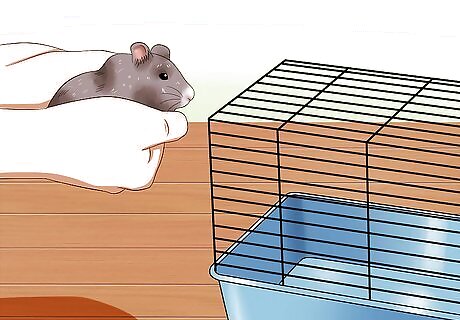
Move a bullied hamster to a different cage. Some hamsters, even if they are the same gender, may end up fighting despite your best efforts to keep them both happy. If the bullied hamster is displaying stress signs like lack of appetite, fearful hiding, or injuries from biting by the dominant hamster, its time to move the bullied hamster to a separate cage. Separate hamsters are better than aggressive and stressed out hamsters together in the same cage. Once you move the bullied hamster to a new cage, try to keep the new cage as close to her old cage as possible. This will allow her to transition more easily to the new cage and reduce her stress levels.

Do not let the hamsters socialize once they are separated. It’s important that once you separate the hamsters, you do not take them out of their cages at the same time, place them together in a cage, or play with them together. They may start fighting again or act aggressively towards each other if they are socializing at the same time.
Adjusting Their Living Space
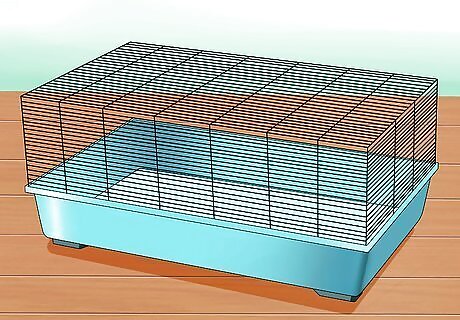
Get a larger cage for both hamsters. Your hamsters might be aggressive with each other because they have limited space to live and play. This can trigger your hamsters’ natural tendency to fight for territory. One hamster should have at least 360 square inches of floor space, so two hamsters should have at least double this size. Talk to a sales associate at your local pet store to find a cage that is large enough to keep both hamsters happy and stress free.
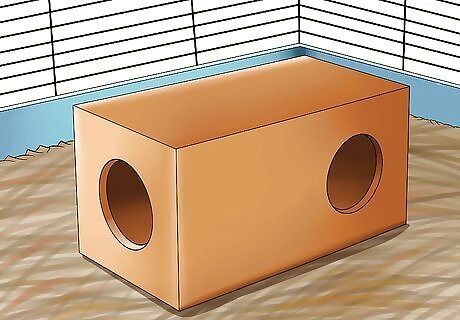
Set up the cage so there are no blind corners or blocked off areas. It's important to lay out your hamsters’ home so neither can trap the other. Avoid long expanses of tube and any blind corners. Make sure any boxes or houses in the cage have at least two exits, so both hamsters cannot be trapped together at once. There should also be no narrow corners or sections in the cage to prevent the hamsters from getting stuck or blocked in.

Provide two beds, two water bottles, two food dishes and two wheels. Have two sets of accessories for each hamster so they don’t have to share or fight over a bottle or a bed. Having two beds is important, as most hamsters do not like sharing beds. If possible, you should also provide two sets of toys, like two wheels or two boxes with two entrances. You should also provide two large food dishes for the hamsters, large enough to fit one hamster in the dish. Most hamsters like to sit in their food dish and don’t like to fight for space in the same dish.
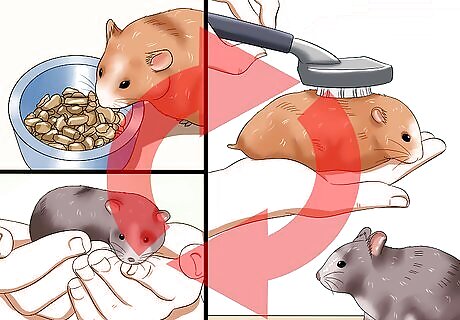
Stick to the same daily routine for both hamsters. Show the hamsters equal treatment and care by feeding, playing, and grooming them at the same time every day. This will cut down on any tension between them and bond them together. Once the pair spends significant amounts of time together, they should treat each other like companions and have less aggression towards each other.
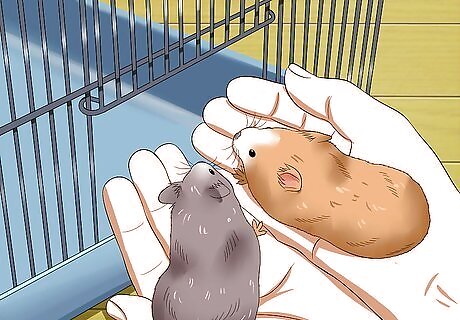
Handle both hamsters together before returning them to their cage. Try to always take both hamsters out of their cage at the same time and handle them together in your hands so they have the same scent on them. This will reduce chasing in their cage and any stress between the hamsters.




















Comments
0 comment